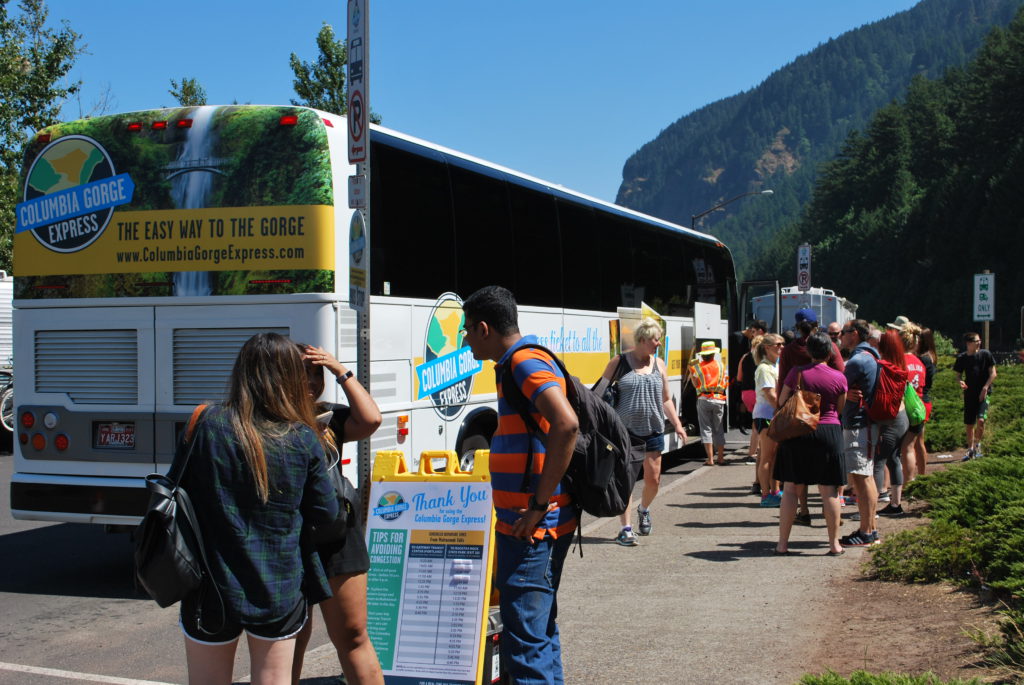A great Columbia River Gorge experience begins with preparation
The days are getting longer, wildflowers are blooming, and songbirds have filled the early morning silence. As you plan your annual spring pilgrimage to the Columbia River Gorge National Scenic Area, ReadySetGorge.com can help you plan your hike (Ready), check trail, weather and trail conditions (Set), and find ways to help protect the Gorge so that future generations can enjoy it, too (GOrge!).
A natural border between Oregon and Washington, the Columbia River Gorge National Scenic Area encompasses nearly 300,000 acres of ecological, recreational, cultural and historical attractions. More than 2 million people visit the Gorge each year, which puts a lot of pressure on the roads and trail systems. ReadySetGorge.com is a great resource for people looking to explore less popular but equally beautiful trails in the region.
There is limited parking at many trailheads throughout the Gorge. Parking at popular sites such as Multnomah Falls and the Dog Mountain Trail System fills up quickly. The Columbia Gorge Express is an affordable and convenient option for traveling between Portland and the Columbia River Gorge National Scenic Area. It travels between Gateway Transit Centers in Portland and Hood River, with stops at Rooster Rock State Park, Multnomah Falls, Cascade Locks and Hood River.

On the Washington side of the Gorge, hikers are encouraged to use the Skamania County West End Transit (WET) Bus from the Skamania County Fairgrounds to the Dog Mountain Trailhead on weekends during the busy season. A permit is required for all Dog Mountain Trail System hikers April 20 through June 16 (Saturday and Sunday only). For those taking the shuttle, the $2 cost ($1 each way) includes a free daily hiking permit.
“The Gorge is definitely open for business. The vast majority of the trails in the Columbia River Gorge National Scenic Area remain open. However, there are some trail closures between Multnomah Falls and Cascade Locks due to the 2017 Eagle Creek Fire,” says Rachel Pawlitz, public affairs officer for the U.S. Forest Service.
Hiking on trails in former burn areas can be extremely dangerous, due to risks associated with falling trees and erosion. It’s important to:
- Stay on official trails.
- Let someone know where you’re hiking.
- Bring along a paper map of the trail you intend to hike.
The Columbia River Gorge-Mt. Hood Trailhead Ambassadors, a group of trained volunteers, will be available throughout the summer on weekends at the 10 most-popular trailheads, serving as a resource for hikers and visitors of all ages and abilities. Trailhead Ambassadors will provide answers to frequently asked questions to help people of all abilities understand trail conditions before they set out. In 2018, 94 Trailhead Ambassadors donated nearly 2,000 hours, while engaging with over 23,700 visitors.
“Summer is a popular and beautiful time to visit the Columbia River Gorge National Scenic Area and Mt. Hood. Plan ahead at ReadySetGorge.com for the best experience – and for tips on how to leave it better so that future generations can enjoy it, too,” says Kevin Gorman, executive director, Friends of the Columbia Gorge.
Photo: Trailhead Ambassadors assist hikers with trail information, and also help keep trails litter free.

